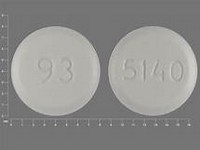Flucloxacillin

Flucloxacillin
CLINICAL USE
Antibacterial agentDOSE IN NORMAL RENAL FUNCTION
Oral: 250–500 mg every 6 hours IV: 250 mg – 2 g every 6 hours IM: 250–500 mg every 6 hours Endocarditis: maximum 2 g every 4 hours if > 85 kgOsteomyelitis: maximum 8 g daily in divided dosesPHARMACOKINETICS
DOSE IN RENAL IMPAIRMENT
GFR (mL/MIN)
DOSE IN PATIENTS UNDERGOING RENAL REPLACEMENT THERAPIES
IMPORTANT DRUG INTERACTIONS
Potentially hazardous interactions with other drugsReduces excretion of methotrexateADMINISTRATION
Reconstition
IV: 250 mg and 500 mg in 5–10 mL water for injection; 1 g in 15–20 mL water for injectionIM: 250 mg in 1.5 mL water for injection; 500 mg in 2 mL water for injectionRoute
IV, IM, oralRate of Administration
Bolus: 3–4 minutes Infusion: 30–60 minutesComments
Compatible with various infusion fluidsOTHER INFORMATION
Monitor urine for protein at high doses Sodium content of injection: 2.26 mmol/g Monitor liver function tests in hypoalbuminaemic patients receiving high doses of flucloxacillin
See how to identify renal failure stages according to GFR calculation
See how to diagnose irreversible renal disease
Home








